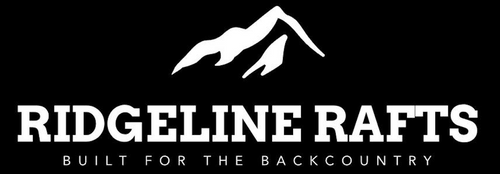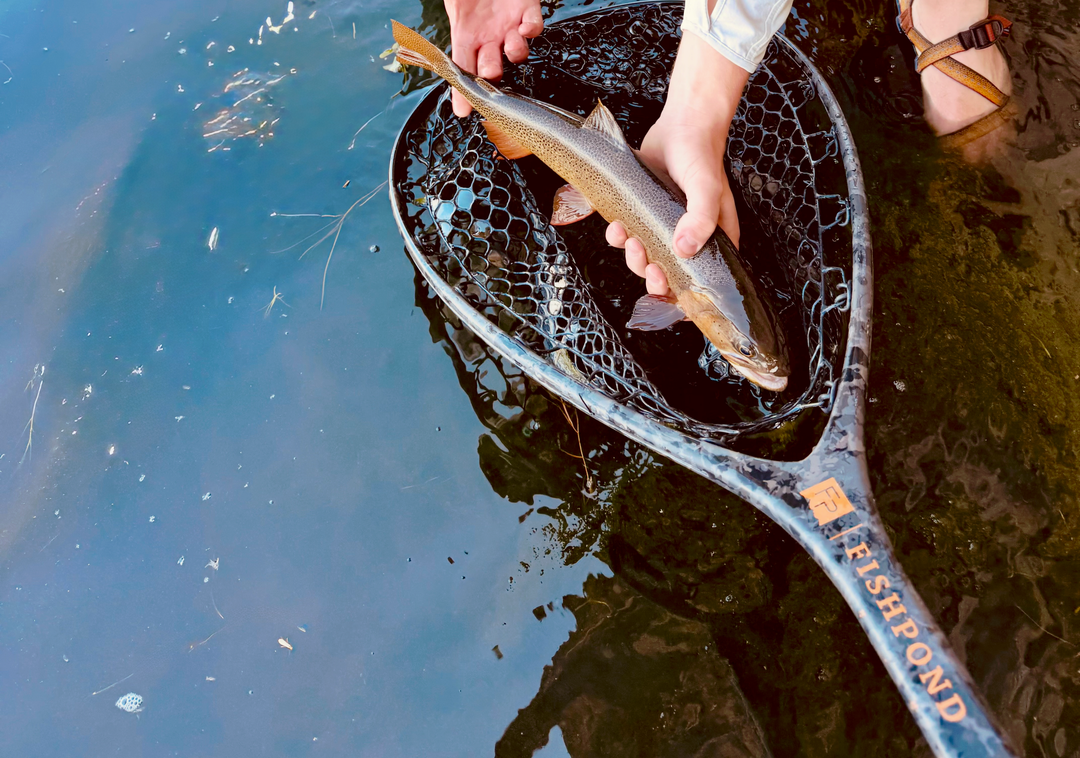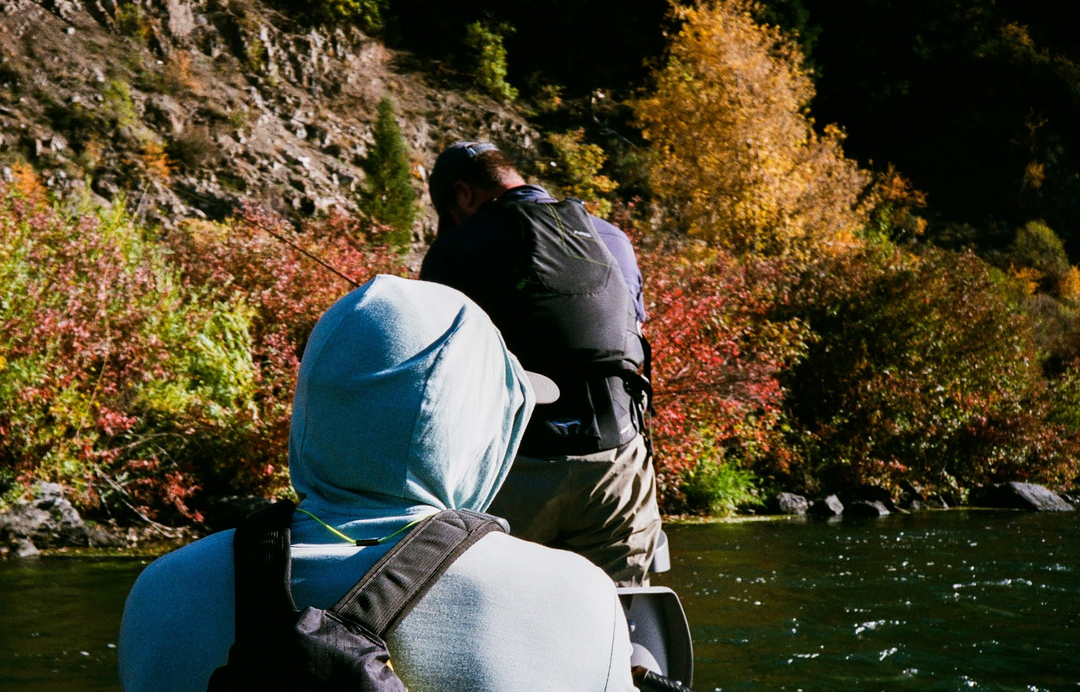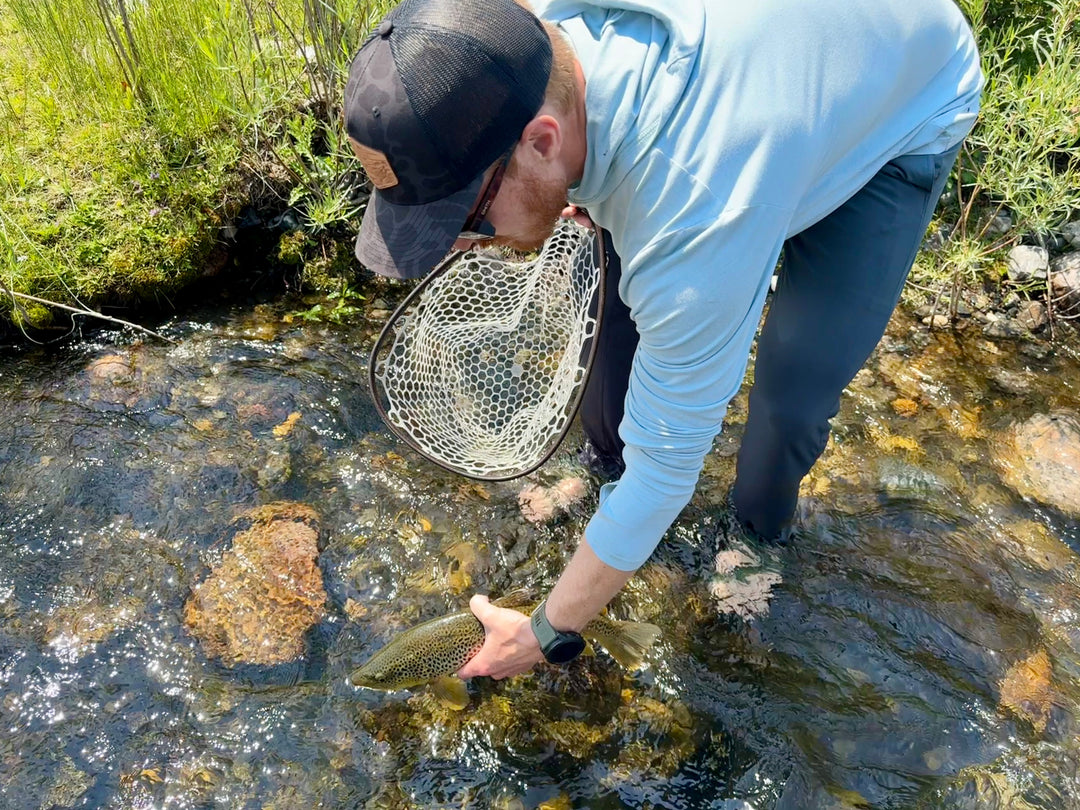How to Catch More Fish with the Right Fishing Partner

Two things about me: One, I’m an early riser. Two, I can be a bit intense and obsessive when it comes to hobbies and activities. When my wife and I moved to the Salt Lake Valley, I was introduced to the concept of “Dawn Patrol.” Originally pioneered by local Wasatch backcountry skiers, they would get up before dawn, start skinning up the mountain, ski down, and be back at the car to make it to the office in time for the work day. This idea of waking up before sunrise to hit the slopes, boulders, or streams before work resonated with me deeply.
I partly love the dawn patrol approach because you can get a lot done in a short period of time and still make it back before work or before the kids have really started most of their activities. Finding like-minded anglers who shared my drive for trout fishing at first light was a game-changer. I got out way more when I started fishing with people that were interested in the same program which meant I got a lot more practice in and in turn my skill level jumped dramatically. The right fishing partner can make all the difference in your success, helping you catch fish by refining techniques like dry fly fishing, nymph fishing, or euro nymphing on foot in large rivers.
Why Your Fishing Partner Matters
Most people just think of a fishing partner as someone who will fish with them and there isn’t anything wrong with that at all, but what I’m honing in on in this article is how the right partner can help you catch more fish and become an overall better angler. This is a longer post so to help give you an idea of what’s coming here’s a brief outline:
-
Defining the right partner
-
How to find and fish with the right partner
-
Skills and strategy: building a productive partnership
-
The impact of fishing with the right people
-
Some final take aways
Defining the Right Partner
The Importance of Compatibility in a Fishing Partner
Fishing styles vary widely, and aligning with someone who shares your approach is crucial. If you’re passionate about dry fly fishing and presenting an artificial fly with a natural drift to fool a brown trout, it won’t be enjoyable to fish with someone who just wants to rip streamers on every float. The right partner will push you to refine your techniques, whether it’s perfecting a dead drift, using weighted flies in a nymph rig, or mastering advanced techniques like a curve cast.
One of the biggest differences I noticed when I started fishing with anglers that had a more similar mindset was in how much time I spent on the water. The increased time on the water, trying new tactics or rigging, more closely watching how my fly line affected my presentation, and learning from experienced anglers, drastically improved my ability to catch more trout.
For instance, most folks know that most trout feed on nymphs beneath the water's surface and after fishing a season with and experienced angler who's local scene requires almost exclusively fishing bobber rigs because their waters were extremely deep. My nymph fishing ability (and confidence) increased much faster being able to learn from a fellow trout bum that fishes nymph rigs day in and day out.
This partnership worked great because he wanted to spend more time practicing hopper fishing and I wanted to improve my nymphing so whenever we got out we each used the tactic we wanted to improve on and kind of accepted we were beginners in each respective discipline and wouldn't catch tons of trout, but could learn a lot from each other and hopefully improve ourselves along the way.
Fishing Partner Profiles: Finding Your Best Fit
Not all anglers have the same goals. Some enjoy fly fishing casually a couple times a year, while others are driven to constantly improve week over week.
Most of the fishing partner types I’ve encountered that have helped me in my growth in fly fishing have fallen into one of these two categories:
1. The Relaxed Angler

These guys and gals have taught me to chill out and relax. I don't always need to constantly be improving or taking things serious all the time. Remember how I said I was a bit intense and obsessive? Fishing with these people can really make a day on the water a real treat regardless of how the fish are cooperating. Maybe its the fish whistling?
-
Loves being on the water more than catching fish
-
Enjoys conversation with the occasional landed trout just as a bonus
-
Probably loves swinging wet flies or let their fly drift without much thought
-
Great for social outings, but may not be super interested in focusing on getting better year over year
2. The Serious Fly Angler
These are the individuals I'm most drawn to and have made the greatest impact on my fishing. They don't have a ton of hobbies if any at all outside of fishing and any free moment they do get they are fishing. They are experienced anglers with a quiver of rods and are well versed in dry flies, streamers, and nymphing. Any time they pick up a rod I feel like I learn something from them.
-
Pays attention to natural insects and the trout’s feeding habits
-
Adjusts tippet size, fly selection, depth, and presentation with zeal
-
Constantly learning new techniques to catch more fish
-
Learning to refine casting techniques like the curve cast to optimize their drag-free drift
-
If your goal is to become a better angler, finding a partner in the second category will tend to accelerate your progress faster, but if you just want to get out of the house for some fresh air and clear your mind without feeling the need to improve - there's nothing wrong with that! Fishing with an experienced angler who understands the nuances of trout fishing and specifically more fly fishing specific aspects like fly line management, the importance of upstream presentation, and when to switch from a dry fly to a nymph rig will lead to better results.
How to Find and Fish with the Right Partner
Finding the right fishing partner is part practical, part luck, and a whole lot of trial and error. But the payoff—someone who pushes you, shares your passion, and keeps pace with your goals—is more than worth the effort.
Where to Look:
-
Fly Shops & Local Events – Talk to staff at your local fly shop or check their bulletin board for group events. Many host casting clinics, fly tying demonstrations, or evening presentations for their locals.
-
Online Communities – Facebook groups are great for this, Reddit threads (like r/flyfishing), and local forums are great places to connect.
-
On the Water – Strike up a conversation with someone fishing a nearby run. If their pace and style match yours stay and chit chat for a while and swap what was/wasn't working on the day. Most folks are pretty easy going and enjoy getting out with people like minded. Offer to exchange contact info to sync up for a day on the water.
-
Guided Trips – Sometimes shops or hosted trips can get a last minute cancelation that you can join in on for a discounted rate and can get you on a great trip and come out with some great fishing buddies by the end of the trip
-
NonProfit Organizations
-
Fish For Garbage is one of the great local organizations in my neck of the woods that can help you get plugged into your local community and find some buds in the process.
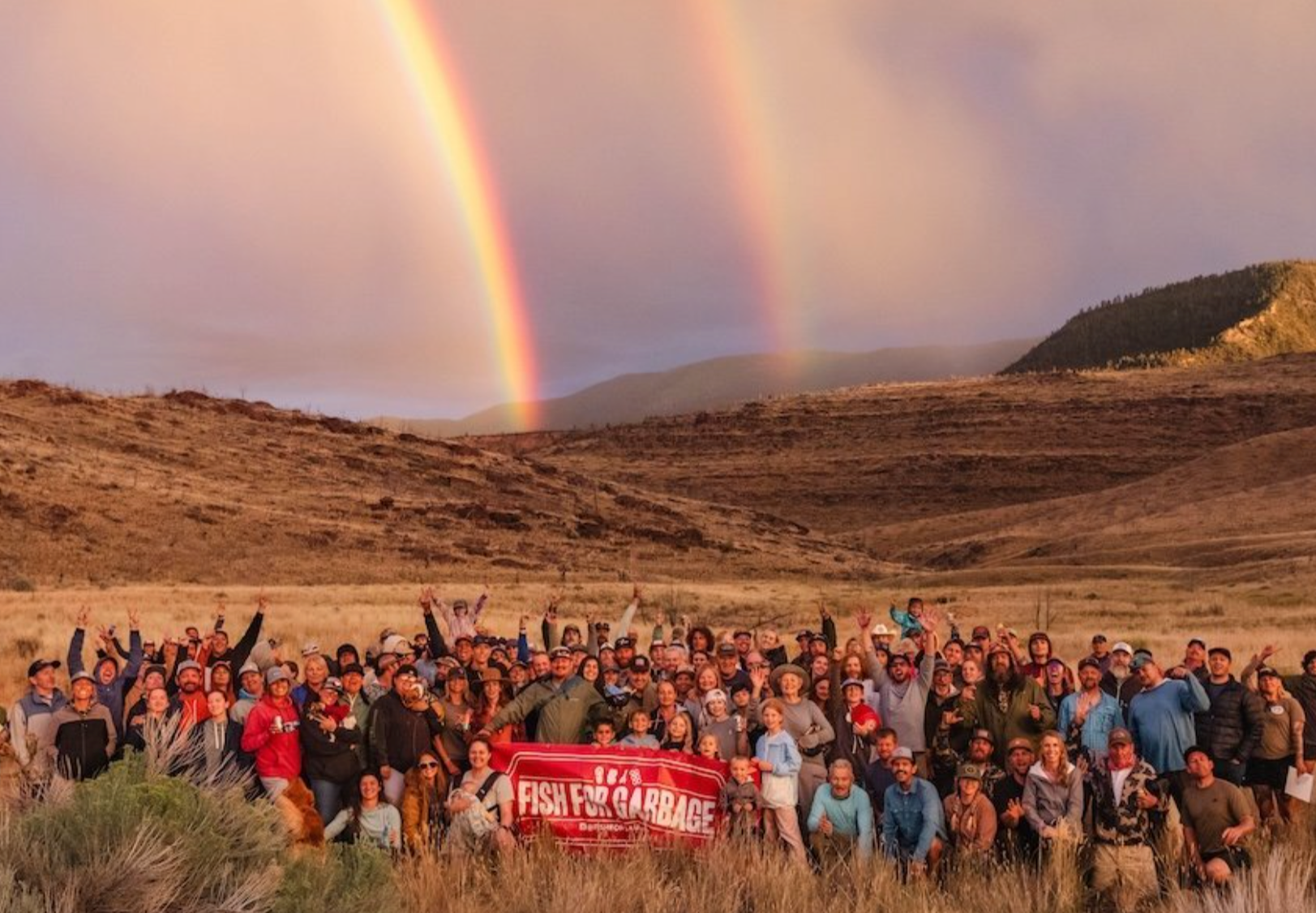
-
The Mayfly Project is another great project that's close to my family's heart as foster parents ourselves. Mentoring a child is an incredibly rewarding experience that will transform you and the child's life. My dad always said one of the greatest joys of having kids is being able to rediscover the world through the eyes of a child.
-
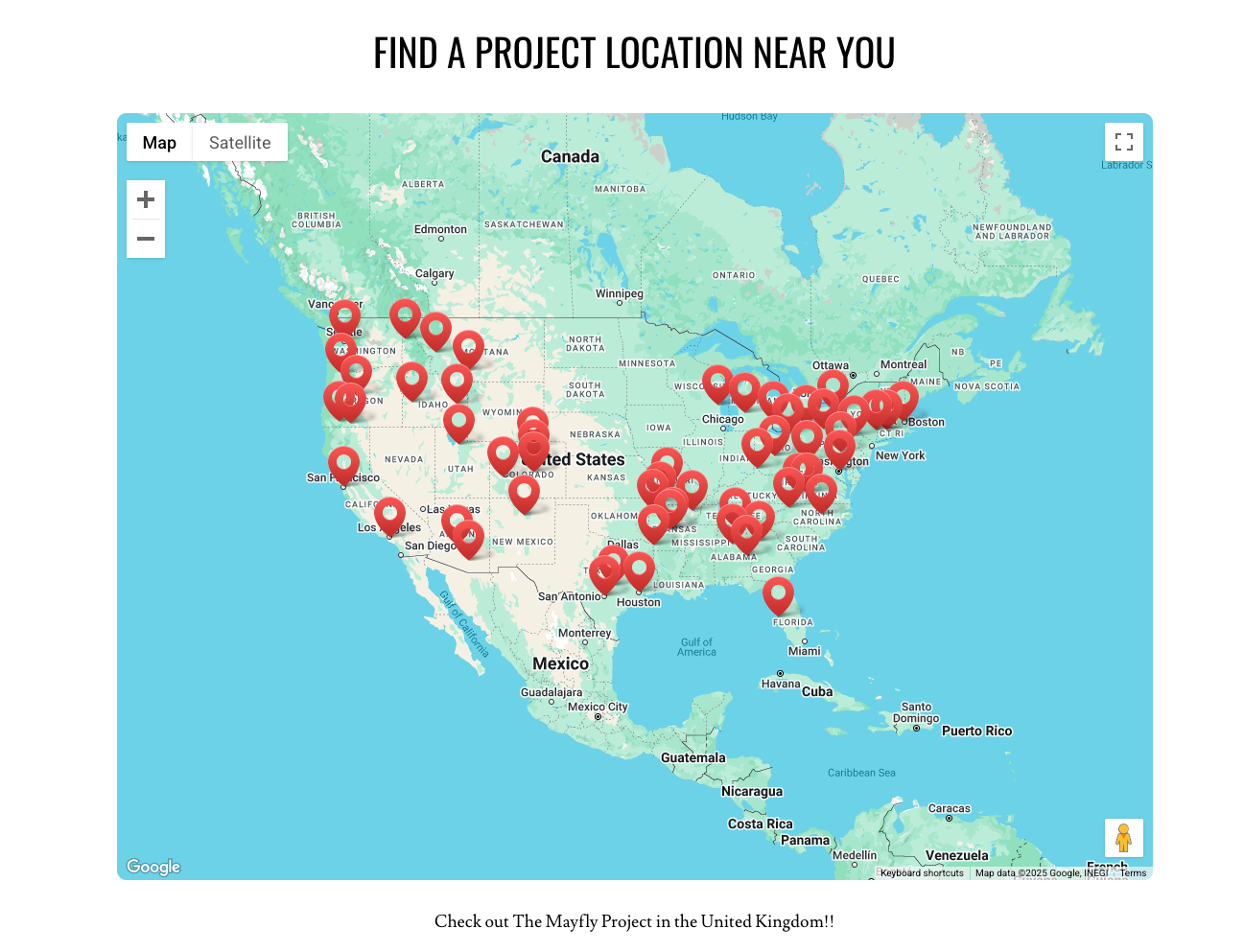
Skills and Strategy
Building Essential Skills
A good fishing partner should possess certain essential skills that can enhance the overall fly fishing experience. Maybe you already have these skills and can help develop a less experienced trout angler that's hungry to get out of the beginner phase. Maybe you're the beginner and working on some of these skills could help you get invited on that next float trip. Here are a couple core skills to consider (this isn't exhaustive by any means):
-
Knowledge of the Water: Understanding the structure, currents, and habitats of the water can help identify the best fishing spots.
-
Casting Skills: Accurate and efficient casting is crucial for presenting the fly to the target area effectively.
-
Knot-Tying Skills: Being able to tie reliable knots, such as the clinch not, improved clinch knot, double surgeon's, and blood knot ensures that when you pick up their rod to fish from the boat your fly isn't going to pop off on your first hook up because they botched the knot.
-
Quick side note: Get a 10lb line from your local sports store and just tie knots while you're watching TV. When my younger brother was getting married we were trapped in the groomsmen room and I found the fishing line they used to hang decorations at the venue and just spent an hour practicing tying blood knots and the larger size line made it easier to learn on and I figured out how to consistently and quickly tie blood knots in that one sitting. I used to avoid tying them on the river at all cost because I sucked at it and they just took forever to tie. Now I won't hesitate to tie them on and they are typically what are on my bobber rigs nowadays.
-
-
Line Management: Effective line management, including stripping, casting, and mending, is essential for a successful presentation.
By possessing these basic yet essential skills, a fishing partner can contribute to a successful and enjoyable fly fishing trip, creating a positive and supportive fishing environment. And if you don't know how to do all of these things yet that's ok! Read some books, watch some Youtube videos, and then get out and practice - everyone sucks at fly fishing at first.
Choosing the Right Waters based on Fly Fishing Style
If you are looking to improve a specific technique the type of fishing you prefer or are trying to improve can dictate the fisheries you should target. If you’re wanting to work on dry fly fishing and live in Salt Lake City, making the longer drive to the Green River is worth it. The Green offers legendary dry fly action all year, whereas the Henry’s Fork or Snake River, while productive, may not provide the same consistency and crystal clear emerald waters for dry flies year round. Likewise, if you enjoy euro nymphing in fast-moving streams, selecting the right waters with deep pockets and a good supply of trout’s food is essential.
How to Fish Together as a Team
You found your buddy or maybe you have a whole crew of anglers - what are some ways that you guys can work together to have more fun and more success on the stream with a rod in hand?
Floating in a boat
With 1 angler:
- Whoever is rowing can help keep an eye on the river while the angler is fixated on his casts and current location. This is really helpful when the angler is watching his drift for a strike on one bank and the rower can keep his eyes on the other side or just generally down stream, particularly for rising trout breaking the surface that are prime targets to catch with a dry fly or emerger pattern.
-
This is also really helpful for beginner fly anglers who are new to the sport and need a lot of attention to help pick up the sport. Fishing from a boat is great for beginners because as the rower you can help improve their odds of hooking up by working to position the boat in closer to the target or speeding up or slowing down the speed of your boat so they aren't getting a lot of drag in their line.
With 2 anglers
- Two people with rods in their hands can really help speed up the odds of a hook up because each angler can try something slightly different to see if the fish are keying in on something different. This can obviously work if someone is nymphing, and the other is dry fly fishing, but more times than not trout are keyed in on one or the other. So if they're only eating nymphs under the surface and mayflies (or any other insect) are hatching you can have 2 bugs each but different variations/colors of mayflies to see what they're stoked on. Or using the same set up but with weighted flies for greater depth or more tippet between each other. Using simple tactics like this can really increase the odds of you landing a trout. Divide and conquer.
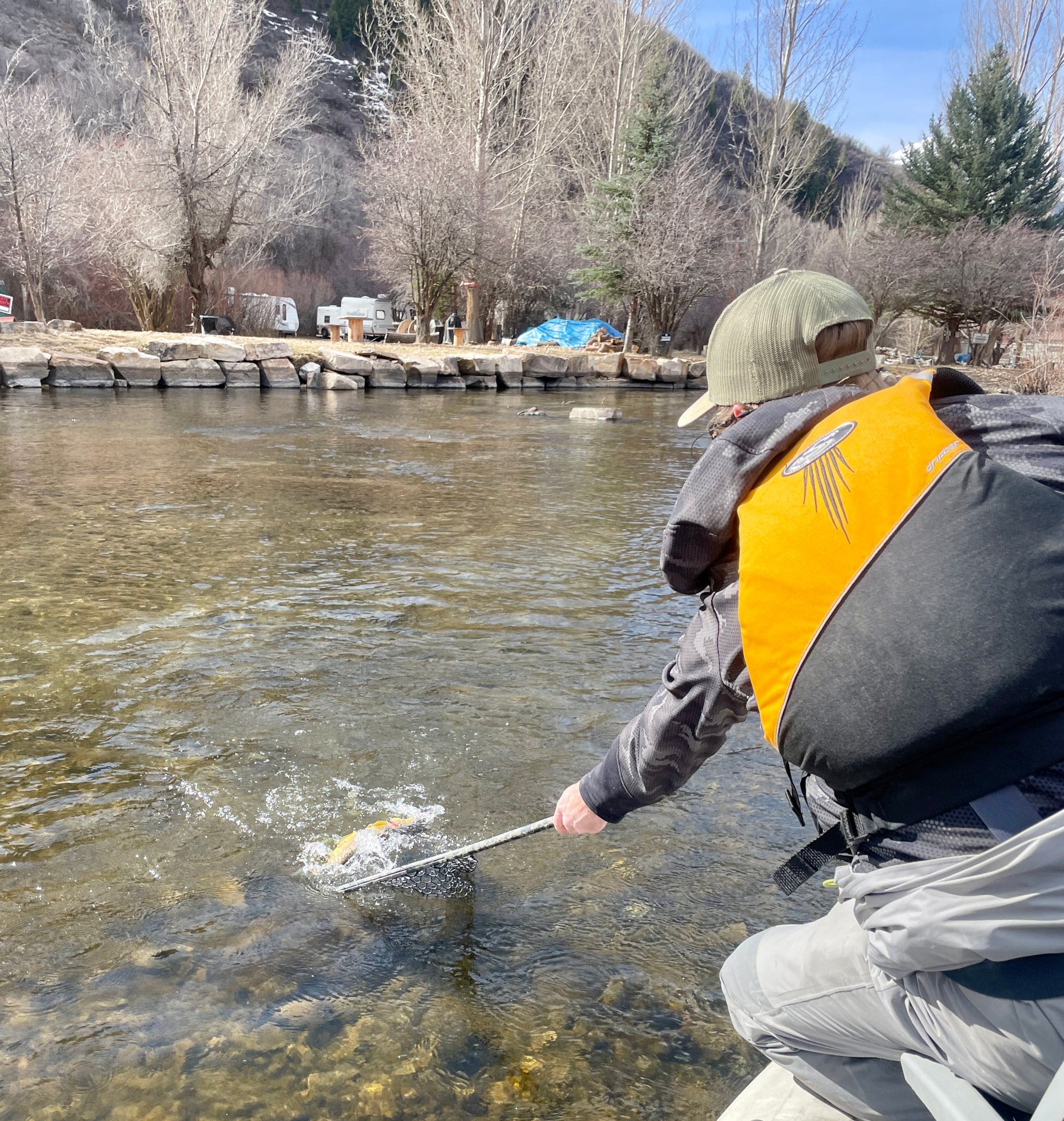
On Foot
-
There are a lot of ways you can work together during a walk and wade trip, and can even use a lot of the boat techniques from above, but my favorite "game" on foot is what I call “Hawk and Hook”. This works when there is an elevated spot above the river where one person can be the "Hawk" - or eyes in the sky - and the other gets to fish. The Hawk can typically see trout a lot easier from their elevated position and can help guide their buddy into an eat. The "Hook" gets to fish, advice, and heckling from their buddy on the bank. This can be a lot of fun over the course of a day and really help each person increase the chances of putting a bend in the rod and a trout in the net.
-
"Make the next cast 2 feet farther. You were short again."
-
"Mend your line further upstream so your nymphs aren't dragging by the time they get to the log where that brown trout is sitting."
-
"Leave it. Leave it. Leave it. SET! SET! SETTT!!!"

-
The Impact of Fishing More with the Right People
In Elk hunting there's an old saying that you have 2 hours to kill an elk: 1 hour at dawn and 1 hour at dusk. Do elk get killed outside of those windows in every state every year? Of course, but the reason the saying exists is because there's a lot of truth to it. If you are hunting with guys who want to hit the trail at 9-10am and then be back at camp before dark the odds of you killing elk are WAY lower than the guy who is in position and waiting for an hour before shooting light and gets back to camp after dark.
The opposite is typically true with winter fly fishing! Trout aren't too active at 6am when it's 20 degrees outside and the sun isn't out. Bugs start hatching like clock work between 12:30-3pm so getting there super early is kind of a waste of time not to mention your frozen solid with nothing to show for it most of the time. So you can tick all the tips and tactics we've talked about so far, but if you are fishing at times of the day that the fish just aren't active it can really hamstring you - this is something that fly shops and experienced anglers can help you understand when you're a beginner.
Putting in the Time
Let’s compare my fishing experiences with two different groups:
The first group consisted of experienced anglers who enjoyed fishing, but rarely got out unless conditions were perfect or we had ALL the details. Planning for trips is really important and this is something you definitely should be doing, but we wouldn't go out unless the stars had aligned and everything was perfected (bugs were hatching, fish were willingly feeding, flows were perfect, we had a local guide buddy recommendation, weather was ideal, etc).
The second group, however, was made up of fewer, but more dedicated anglers who were serious about getting out regardless of the weather or flows weren't ideal.
Group 1 (Over 2-3 Years):
-
Rivers Fished: Madison, Green (twice), Provo, Unnamed River #1
-
Trips Taken: 5
-
Floats Per Trip: 1 per day
Group 2 (Over 6 Months):
-
Rivers Fished: Madison, Beaverhead (three times), Bighole, Green, Unnamed River #1 (three times), Provo (ten times), Henry’s Fork, Unnamed River #2 (twice)
-
Trips Taken: 20
-
Floats Per Trip: 1-3 per day
I went out four times as much with Group 2 than I did Group 1 in half to a third amount of time. That did wonders for my growth and development. We fished tons of different types of water, different times of day, different locations, and different hatches which exposed me to so much that I learned more in that one year than I did the previous three years combined.
Another point to add some additional emphasis to is the amount of times we floated on each of those individual trips with Group 2. Most of those days, depending on how long the rivers were and what sections we wanted to float, we frequently would float 2 to 3 times a day on every single one of those sections. So in the span of 20 trips, we floated anywhere between 30 and 50 different times!
We would wake up in the early in the morning before the sun came up and do a short streamer float, run shuttle, then do a longer hatch specific day float, have lunch and then the day with a short streamer float at dusk. The sheer quantity of time and effort put in is one of the reasons why I had the best year in 2024 that I've ever had.
Every single one of those trips that I did with Group 1, we floated once a day and got five floats out of those five days. But by getting on the same program that somebody else was interested in running, I was able to get 8 to 12 times the amount of floats in essentially the same timeframe every single day. This is the reason why I caught so many more fish than I ever had and why I connected with bigger fish than I ever had. Don't give me wrong - this was not easy and not all day is a great days. You have to seriously work when you're hunting for big brown trout with streamers and chasing hatches, but it paid off with my biggest fish to date and numerous other fish over 18".

Final Take Aways
Once I started fishing with others who were more interested in fishing the same program (dawn and dusk) and fishing with folks that have more experience and skill my abilities felt like they skyrocketed. My new group didn’t mind driving several hours after work on a Friday to fish in Montana, Idaho, or Wyoming and then setting up camp in the dark, and launching the boat at sunrise to fish through the day. This level of commitment allowed us to experiment with different techniques like euro nymphing, using a wet fly to mimic subaquatic insects, and refining how we manipulate our fly rod and rod tip for a perfect dead drift.
-
Find a Partner with the Same Goals – If you want to improve, fish with someone who shares your level of commitment. Doesn't matter if you're both new to the sport or been around it for decades.
-
Consistency is Key – More time on the water equals more opportunities to refine your technique.
-
Challenge Yourself – Experiment with different techniques like nymph fishing, wet flies, and mastering the natural drift.
-
Invest in the Right Gear – A quality fly rod, a large selection of flies, and a inflatable fishing boat (if you can swing it) can make all the difference.
Fishing is more than just catching fish; it’s about the adventure, the learning process, and the people you share it with. Finding the right partner(s) can help you become the angler you aspire to be!
For those looking to take their fishing to the next level, consider investing in high-quality gear. Ridgeline Rafts are built for anglers who demand durability, performance, and reliability. Whether you’re floating a new stretch of river or chasing big trout in remote waters, our rafts will get you there and back, ready for the next adventure. Keep a look out in 2026!
